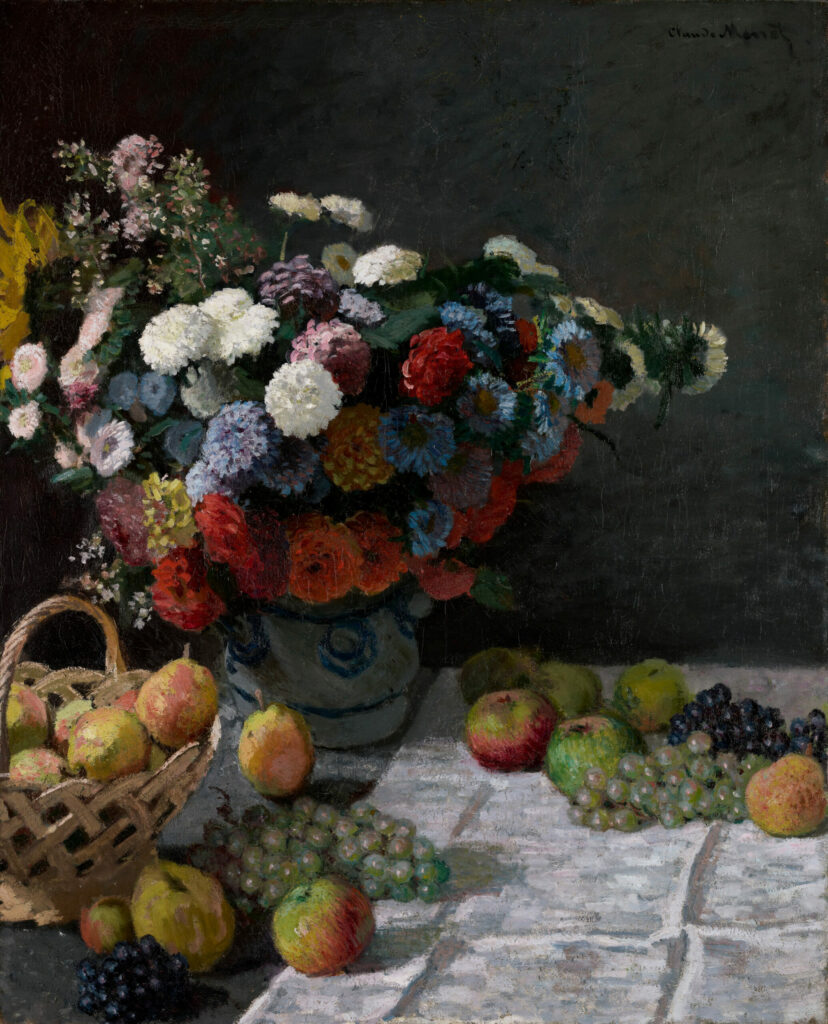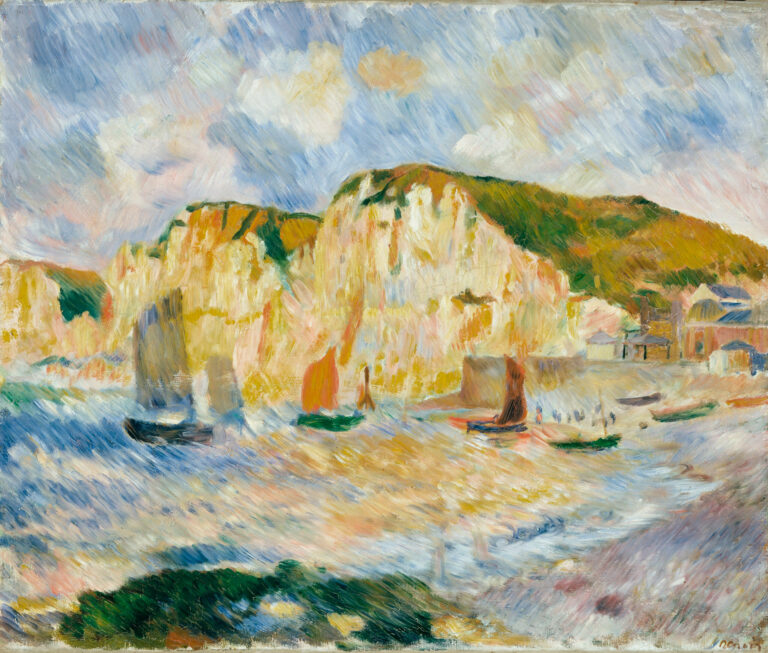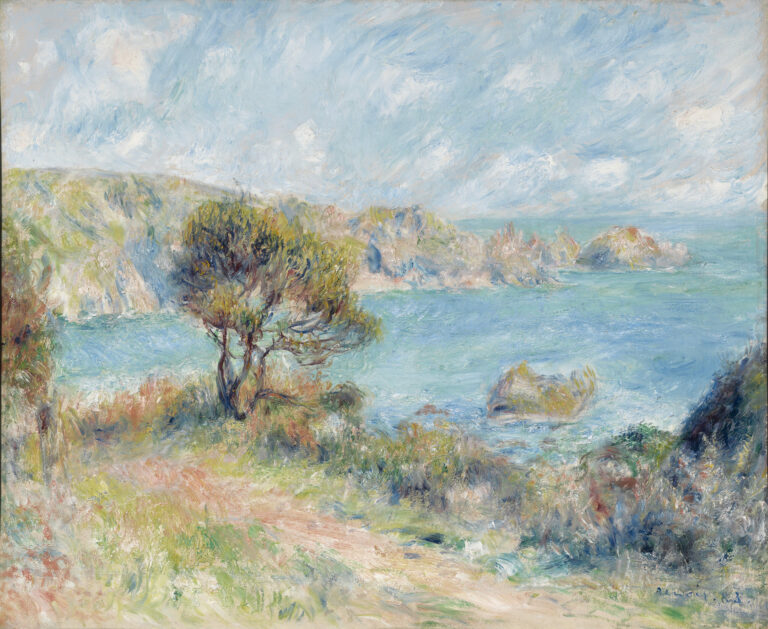
Bougival, summer 1869. Claude Monet temporarily leaves the banks of the Seine for his studio. He arranges multicolored flowers in a vase on a table, along with reddish apples, golden pears, green and black grapes. What appears to be a traditional exercise becomes an experimental ground that will revolutionize painting.
A Laboratory of Light
Observe how Monet varies his brushstrokes according to what he paints. The white tablecloth unfolds in broad, flat brushstrokes. The apples emerge through sketched, almost blurred touches. The petals burst forth in short, dense dots. This technical diversity is not random: it captures the very texture of each element. Light circulates everywhere, animates surfaces, makes colors vibrate against each other. Monet does not seek precision of detail but the overall effect, the sensation of luminous presence.
Toward Impressionism
This oil on canvas marks a pivotal transition. Monet transposes into the studio what he discovers outdoors: light is not fixed, colors influence each other mutually, atmosphere matters as much as the subject. These explorations from 1869 lay the foundations for Impressionism, which would explode in the 1870s. The young twenty-nine-year-old painter already distances himself from academicism to invent a new pictorial language.
Monet, the Explorer Artist
Claude Monet (1840-1926) devoted his life to capturing the infinite variations of light. From his beginnings in Le Havre to the Water Lilies of Giverny, he constantly pushed the boundaries of representation. This still life perfectly illustrates his approach: transforming a classic genre into a field of technical innovation.
Think About It
💭 Look again at these flowers and fruits. Do you see how Monet paints not so much objects as the light that reveals them?
About this work
- Still Life with Flowers and Fruit, Claude Monet, 1869
- Oil on canvas, 100.3 × 81.3 cm (39 1/2 × 32 in.)
- The J. Paul Getty Museum, Los Angeles
- https://www.getty.edu/art/collection/object/103RF8






